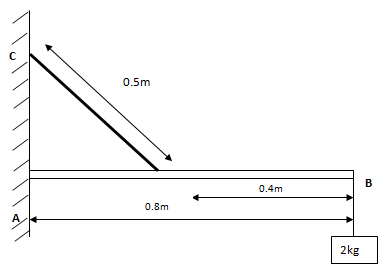1. The price index of an article in 2000 based on 1998 was 130. The price index for the article in 2005 based on 2000 was 80.
Calculate the:
a) price index of the article in 2005 based on 1998.
b) price of the article in 1998 if the price of the article was 45,000 in 2005.
2. Two numbers A and B have maximum possible errors ea and eb respectively.
a) Write an expression for the maximum possible error in their sum
b) If A = 2.03 and B = 1.547, find the maximum possible error in A+B.
3. In an equilateral triangle PQR, three forces of magnitude 5N, 10N and 8N act along the sides PQ, QR and PR respectively. Their directions are in the order of the letters. Find the magnitude of the resultant force.
4. A biased coin is such that a head is three times as likely to occur as a tail. The coin is tossed 5 times. Find the probability that at most two tails occur.
5. A stone is thrown vertically upwards with a velocity of 21ms-1
Calculate the:
a) maximum height attained by the stone.
b) time the stone takes to reach the maximum height.
6. Two events A and B are such that

Find:
a) P(A∩B)
b) P(A∪B)
7. The table below shows how T varies with S
|
T |
-2.9 |
-0.1 |
2.9 |
3.1 |
|
S |
30 |
20 |
12 |
9 |
Use linear interpolation/ extrapolation to estimate the value of
a) T when S = 26
b) S when T =3.4
8. A particle of mass 15kg is pulled up a smooth slope by a light inextensible string parallel to the slope. The slope is 10.5m long and inclined at sin-1  to the horizontal. The acceleration of the particle is 0.98ms-2.
to the horizontal. The acceleration of the particle is 0.98ms-2.
Determine the:
a) tension in the string
b) work done against gravity when the particle reaches the end of the slope.
9. The frequency distribution below shows the ages of 240 students admitted to a certain University.
|
Age (years) |
Number of Students |
|
18 - <19 |
24 |
|
19 - < 20 |
70 |
|
20 - <24 |
76 |
|
24 - < 26 |
48 |
|
26 - <30 |
16 |
|
30 - <32 |
6 |
a) Calculate the mean age of the students.
b) i) Draw a histogram for the given data
ii) Use the histogram to estimate the modal age.
10. A particle of mass 4kg starts from rest at a point (2i- 3j + k) m. It moves with acceleration a = (4i + 2j – 3k)ms-2 when a constant force F acts on it.
Find the:
a) force F
b) velocity at any time t
c) work done by the force F after 6 seconds.
11. a) Use the trapezium rule with 6 – ordinates to estimate the value of 
correct to three decimal places.
b) i) Evaluate

correct to three decimal places
ii) Calculate the error in your estimation in (a) above.
iii) Suggest how the error may be reduced.
12. A random variable X has a normal distribution where P(X>9) = 0.9192 P(X>11) = 0.7580. Find:
a) the values of the mean and standard deviation
b) P(X>10)
13. The figure below shows a uniform beam of length 0.8 meters and mass 1 kg. The beam is hinged at A and has a load of mass 2kg attached at B.

The beam is held in a horizontal position by a light inextensible string of length 0.5 meters. The string joins the mid-point M of the beam to a point C vertically above A.
Find the :
a) tension in the string.
b) magnitude and direction of the force exerted by the hinge.
14. a) Draw on the same axes the graphs of the curves y = 2 – e-x and 
b) Determine from your graphs the interval within which the root of the equation  lies. Hence, use Newton – Raphson’s method to find the root of the equation correct to 3 decimal places.
lies. Hence, use Newton – Raphson’s method to find the root of the equation correct to 3 decimal places.
15. The table below shows the number of red and green balls put in three identical boxes A, B and C.
|
Boxes |
A |
B |
C |
|
Red balls |
4 |
6 |
3 |
|
Green balls |
2 |
7 |
5 |
A box is chosen at random and two balls are then drawn from it successively without replacement. If the random variable X is “the number of green balls drawn”,
a) draw a probability distribution table for X
b) calculate the mean and variance of X
16. At 10:00am, ship A and ship B are 16km apart. Ship A is on a bearing N350E from ship B. Ship A is travelling at 14kmh-1 on a bearing S290E. Ship B is travelling at 17kmh-1 on a bearing N500E. Determine the;
a) velocity of ship B relative to ship A
b) closet distance between the two ships and the time when it occurs.
